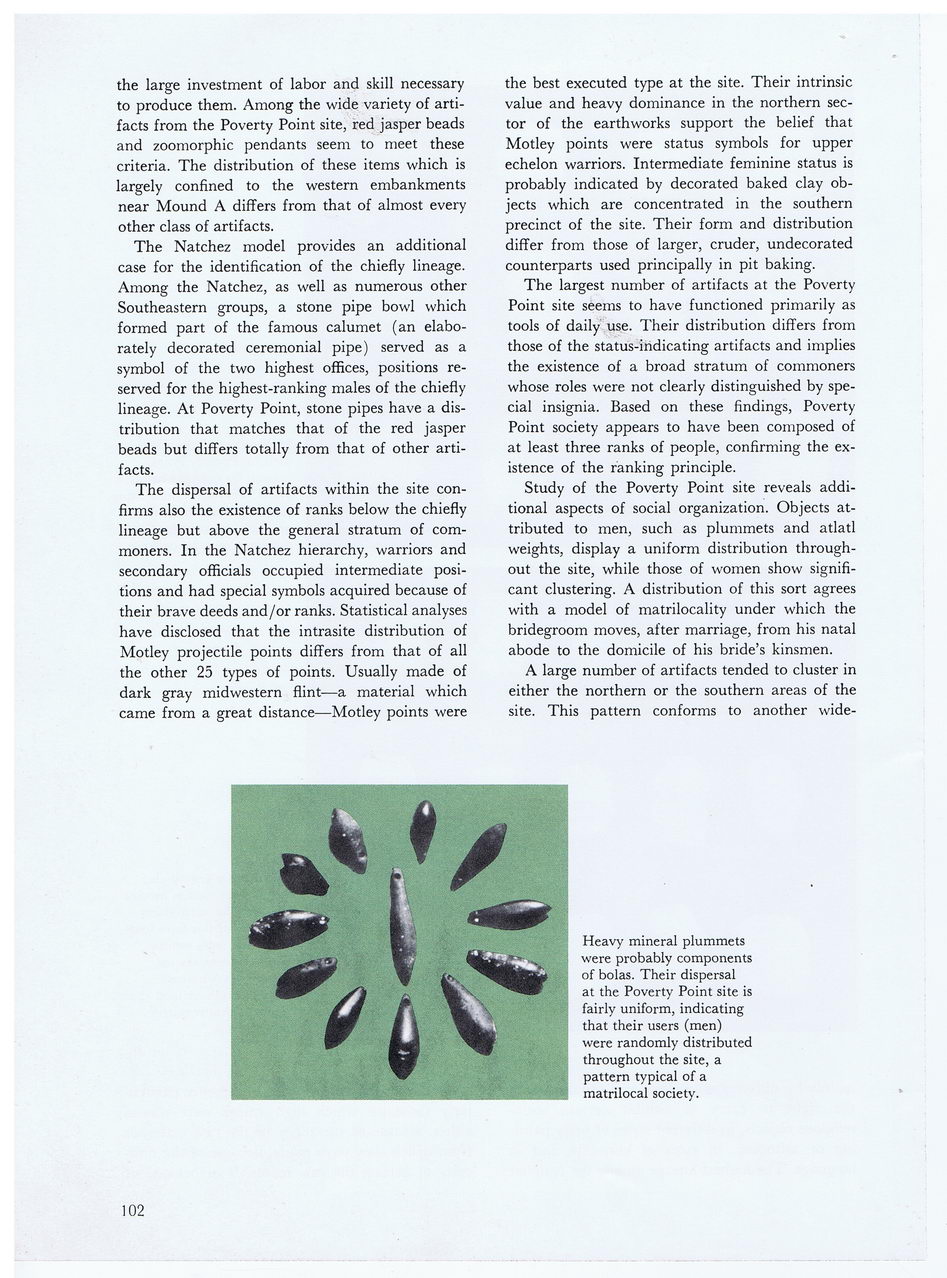This text was obtained via automated optical character recognition.
It has not been edited and may therefore contain several errors.
the large investment of labor and skill necessary to produce them. Among the wide variety of artifacts from the Poverty Point site, red jasper beads and zoomorphic pendants seem to meet these criteria. The distribution of these items which is largely confined to the western embankments near Mound A differs from that of almost every other class of artifacts. The Natchez model provides an additional case for the identification of the chiefly lineage. Among the Natchez, as well as numerous other Southeastern groups, a stone pipe bowl which formed part of the famous calumet (an elaborately decorated ceremonial pipe) served as a symbol of the two highest offices, positions reserved for the highest-ranking males of the chiefly lineage. At Poverty Point, stone pipes have a distribution that matches that of the red jasper beads but differs totally from that of other artifacts. The dispersal of artifacts within the site confirms also the existence of ranks below the chiefly lineage but above the general stratum of commoners. In the Natchez hierarchy, warriors and secondary officials occupied intermediate positions and had special symbols acquired because of their brave deeds and/or ranks. Statistical analyses have disclosed that the intrasite distribution of Motley projectile points differs from that of all the other 25 types of points. Usually made of dark gray midwestern flint—a material which came from a great distance—Motley points were the best executed type at the site. Their intrinsic value and heavy dominance in the northern sector of the earthworks support the belief that Motley points were status symbols for upper echelon warriors. Intermediate feminine status is probably indicated by decorated baked clay objects which are concentrated in the southern precinct of the site. Their form and distribution differ from those of larger, cruder, undecorated counterparts used principally in pit baking. The largest number of artifacts at the Poverty Point site seems to have functioned primarily as tools of daily use. Their distribution differs from those of the status-indicating artifacts and implies the existence of a broad stratum of commoners whose roles were not clearly distinguished by special insignia. Based on these findings, Poverty Point society appears to have been composed of at least three ranks of people, confirming the existence of the ranking principle. Study of the Poverty Point site reveals additional aspects of social organization. Objects attributed to men, such as plummets and atlatl weights, display a uniform distribution throughout the site, while those of women show significant clustering. A distribution of this sort agrees with a model of matrilocality under which the bridegroom moves, after marriage, from his natal abode to the domicile of his bride’s kinsmen. A large number of artifacts tended to cluster in either the northern or the southern areas of the site. This pattern conforms to another wide- Heavy mineral plummets were probably components of bolas. Their dispersal at the Poverty Point site is fairly uniform, indicating that their users (men) were randomly distributed throughout the site, a pattern typical of a matrilocal society. 102

Poverty Point (Indian Culture) Poverty Point - John L Gibson (07)